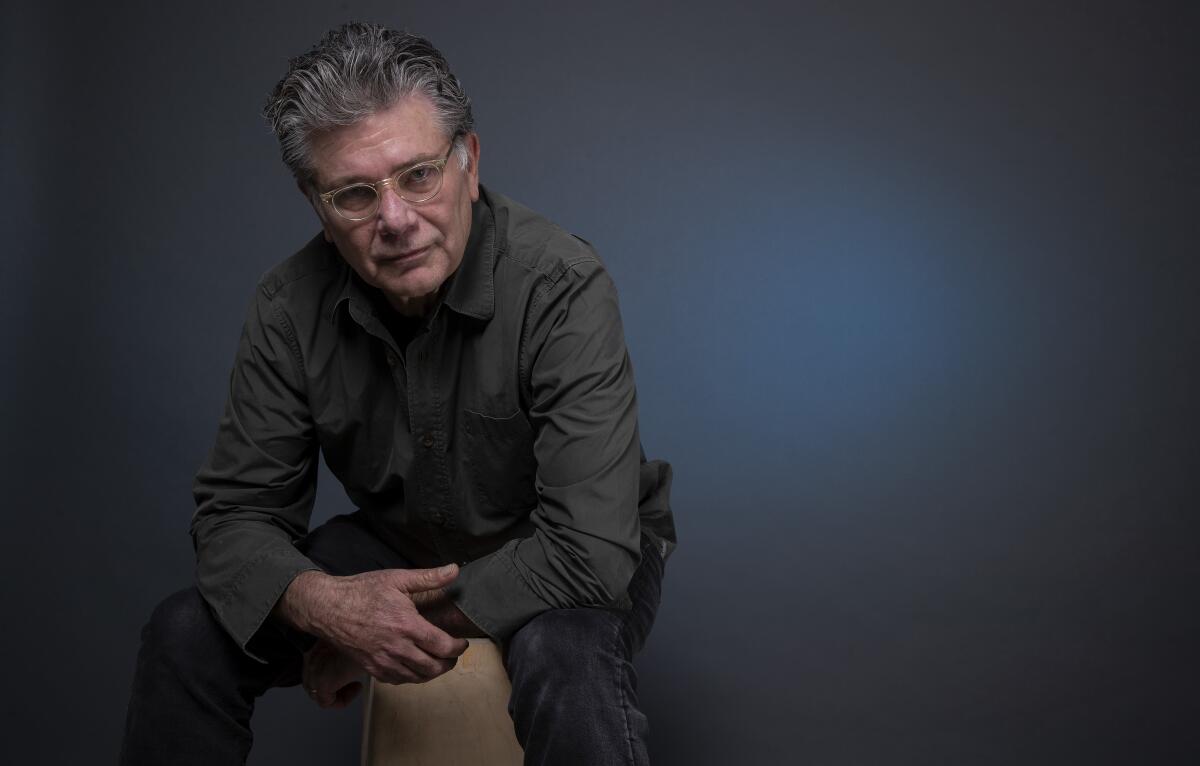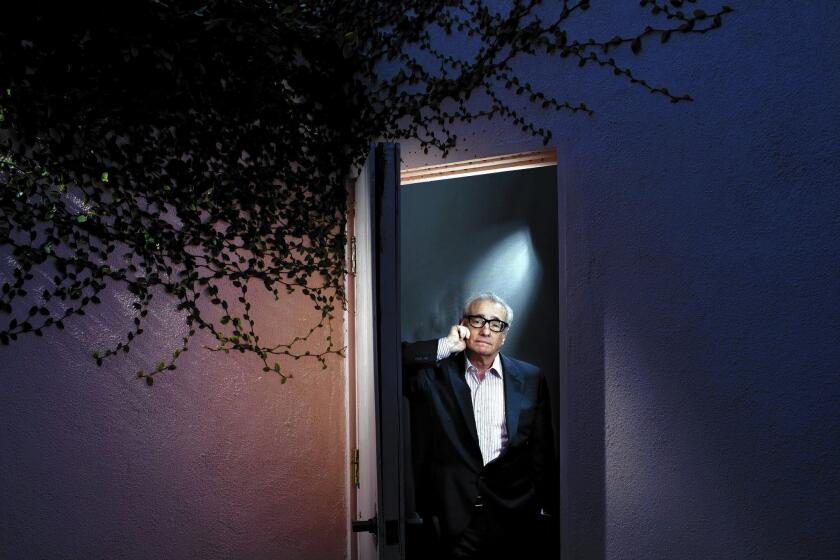How ‘The Irishman’ writer Steven Zaillian narrowed down Frank Sheeran’s life to tell his story

- Share via
In Charles Brandt’s excellent book, “I Heard You Paint Houses,” Frank Sheeran describes his life, all 83 years of it.
It’s fascinating, but I’m not really interested in, or may just not be very good at, writing film biographies. So how to approach what is essentially a biography without it becoming one?
The great William Goldman advised screenwriters in his astute and wildly entertaining “Adventures in the Screen Trade” to get into stories — and every scene in them — as late as possible. Figure out what the thing is really about and cut as close to that bone as you can.
I read this advice when he wrote it back in 1983, at the beginning of my own adventure in the screen trade, and have adhered to it ever since. Except once.
“The Irishman” is Martin Scorsese’s second Netflix release of 2019, a year in which the cinematic statesman has emerged more vital and relevant than ever.
I wrote a script about Walter Winchell some years ago, detailing his life in vaudeville, newspapers, radio and television, and it wasn’t until I was done that I realized Ernest Lehman and Clifford Odets had done it much better than I ever could decades earlier with their Winchell proxy character J.J. Hunsecker in “Sweet Smell of Success.” The action in that film didn’t take place over 60 years like mine but, rather, in just a couple of days.
I was determined to avoid the cradle-to-grave Winchell Problem with Frank Sheeran’s story. What was the shortest, most essential part of his long life of crime I could contain the story to? How late would Goldman come into it, and how soon would he get out?
Frank said that his experiences in WWII — 411 days of combat as a rifleman in the 45th Infantry Division in Italy — shaped the rest of his life. So several scenes of battle at Salerno, Monte Cassino and Anzio beach seemed necessary.
But upon reflection, and discussions with Martin Scorsese, we realized the same thing could be accomplished in just one scene of Frank describing over a glass of wine to Russell Bufalino — who had not been in the war — what it felt like.
So I could skip past the war and get in when Frank made the first friendship that would guide his life — with Bufalino — and get out when he lost the second — with Jimmy Hoffa.
Yes, I’d have Frank years after that, in an assisted-living facility, but the main action would be contained to about 20 years, from the mid-1950s to the mid-1970s.
Still, that’s a lot of years. How do you navigate them? I felt that some kind of framework — some kind of story within the story — could help.
Deep in Mr. Brandt’s book, Frank says in regard to a fateful drive he took with Bufalino and their wives in 1975, “The whole thing was built around the wedding.”
I thought, “What a great line to begin a story with — too bad it comes so late in it ...” then thought, “Maybe it can be moved to the beginning, and the long drive from Philly to Detroit across three states could be used as architecture for the entire script.”
From “Taxi Driver” to “The Irishman,” Martin Scorsese has created indelible films for the American imagination. He’s not done just yet.
The fact that nothing much happened on the trip — mainly just collecting money and taking cigarette breaks at the side of the highway — was all the better. The main story, the alliance and eventual clash between organized crime and organized labor figures, would eventually catch up to and then overtake this prosaic one on the road, and we would understand, when we needed to, what “the whole thing” was.
There was another obvious challenge. A film like “The Irishman” can hardly escape our memories of the other gangster films Scorsese and De Niro have made together yet somehow had to work on its own.
There are ways to deal with this, to have a scene that acknowledges their other films while at the same time says something new. The first shot in “The Irishman,” written as a long tracking shot in the script, is one such scene. In the context of this story, almost 30 years after “Goodfellas’” famous Copacabana shot, its meaning is different.
The most obvious shared element, perhaps, is narration, so effectively used by Nicholas Pileggi in both “Goodfellas” and “Casino.”
I shied from it at first, for that reason, but soon realized it was essential to “The Irishman” for the same reason it was for the other films. Not for information or to explain what a character is thinking or feeling — that’s fine for a book, but not a film that should be dramatizing such things — but rather because Frank’s use of language, his idiosyncratic way of describing things, his cadence and the patois of gangsters that only someone who has lived in that world knows, lets us, the uninitiated, in on its secrets.
More to Read
Only good movies
Get the Indie Focus newsletter, Mark Olsen's weekly guide to the world of cinema.
You may occasionally receive promotional content from the Los Angeles Times.











